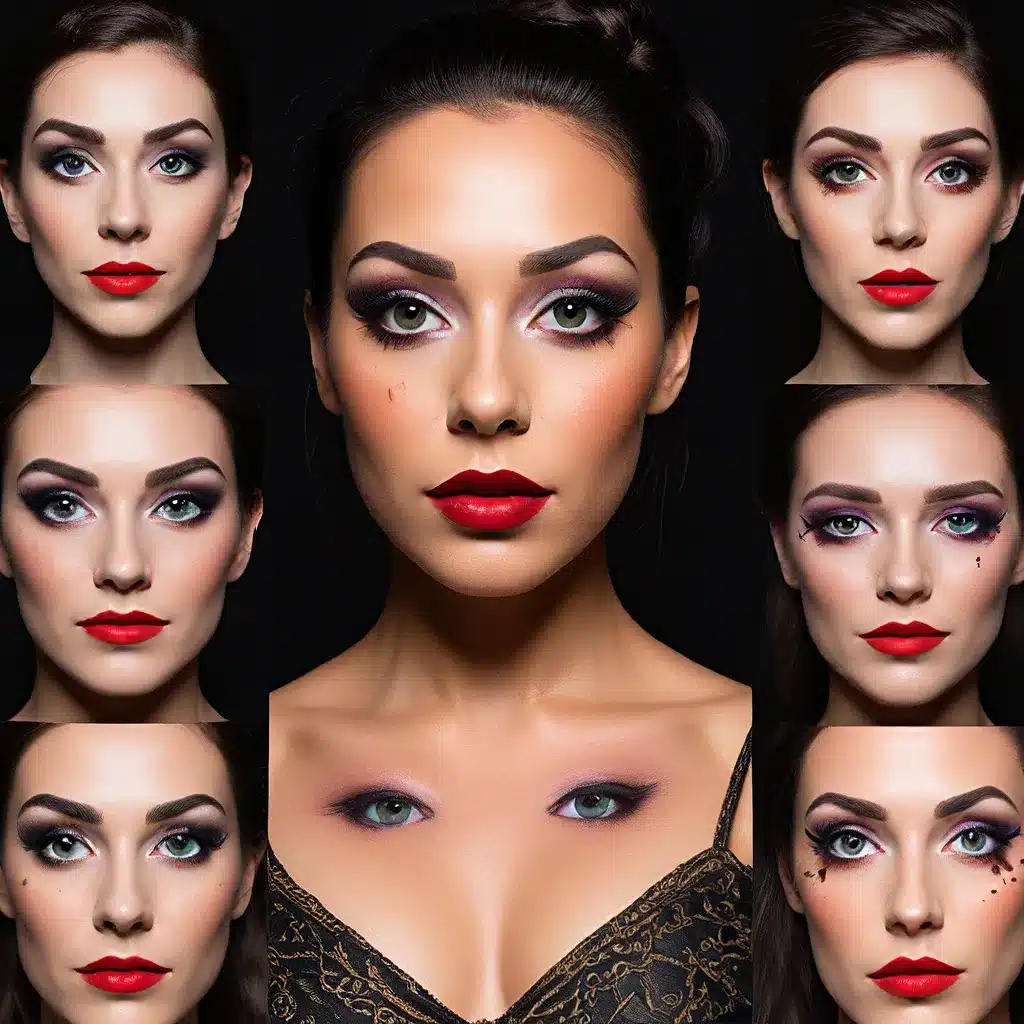
The Magical Power of Stage Makeup
As a drama teacher for over 30 years, I’ve witnessed the profound impact that stage makeup can have on students. It’s not just about painting faces – it’s about transforming them, unlocking the essence of a character and bringing them to life on stage.
You see, I’ve been there myself. When I was a high school student, I had the opportunity to learn stage makeup, and it was a genuine game-changer for me. Suddenly, I could visualize the characters I was portraying, and it made all the difference in my performance. I remember the thrill of watching my own face morph into someone completely different, a transformation that ignited my passion for the theater.
Years later, as an award-winning drama teacher, I made it my mission to share this transformative power with my students. The Musical Theater Center where I teach has become a hub of creativity, where students not only hone their acting skills but also delve into the world of theatrical makeup design.
Bringing Characters to Life
One of the most remarkable things about stage makeup is its ability to transport actors and audiences alike into a different world. When a student slips into a character, the right makeup can be the final piece of the puzzle, completing the transformation and allowing them to fully embody their role.
I’ll never forget the time I had a student who was playing the part of an elderly woman in one of our productions. She was a naturally vibrant and youthful-looking girl, and without the help of stage makeup, she would have struggled to convey the weathered features and weary expression of her character. But with the skillful application of wrinkles, age spots, and a touch of gray in her wig, she became a completely different person – one that the audience could truly empathize with.
It’s not just about making someone look older, though. Stage makeup can also be used to create fantastical, otherworldly characters. One of my favorite lessons was when we explored the world of Cirque du Soleil, challenging my students to design mesmerizing makeup for the circus performers. Their creativity and attention to detail was truly impressive, as they transformed their classmates into vibrant, larger-than-life characters that seemed to leap off the stage.
The Art of Transformation
But stage makeup is more than just a tool for physical transformation – it’s a true art form. The process of designing and applying theatrical makeup requires a deep understanding of color theory, lighting, and the unique demands of the stage. It’s a delicate balance of enhancing features, creating shadows, and bringing out the essence of a character.
I remember when I first started teaching stage makeup, I was amazed at how quickly my students grasped the concepts. They’d pour over color swatches, experiment with different techniques, and meticulously plan out their designs. And when they finally got to apply their creations, the sense of pride and accomplishment was palpable.
As I’ve mentioned before, stage makeup has a way of boosting student engagement like nothing else. Suddenly, the shy and hesitant performers would come alive, their confidence soaring as they saw the physical manifestation of their character take shape. It’s a transformative process that goes beyond the surface, touching the very heart of what it means to be an actor.
The Collaborative Artistry
Of course, stage makeup doesn’t exist in a vacuum. It’s part of a larger collaborative effort that brings a production to life. The costume designer, the lighting technician, the director – they all play a crucial role in shaping the overall look and feel of a character. And when all these elements come together seamlessly, the result is pure magic.
I remember working on a production of “The Phantom of the Opera” where the makeup designer and the costume designer worked hand-in-hand to create the Phantom’s iconic appearance. The intricate mask, the sculpted features, the dramatic lighting – it all combined to create a character that was both haunting and captivating. And the students who brought this vision to life were forever changed by the experience, their understanding of theatrical artistry deepened in ways they never could have imagined.
The Lasting Impact
As I reflect on my decades of teaching, I can’t help but be amazed by the lasting impact that stage makeup has had on my students. It’s not just about the immediate transformation they experience on stage – it’s about the confidence, the creativity, and the sense of empowerment that they carry with them long after the final curtain has fallen.
I’ve had students go on to pursue careers in theater, using the skills they learned in my classroom to bring characters to life on the professional stage. And even those who don’t choose the performing arts as a path, they still carry with them the invaluable lessons they learned about self-expression, collaboration, and the power of imagination.
So, if you’re looking to truly unlock the creative potential of your students, I encourage you to explore the world of stage makeup. It’s a journey of transformation, where the impossible becomes possible, and the ordinary becomes extraordinary. After all, isn’t that what the theater is all about?

